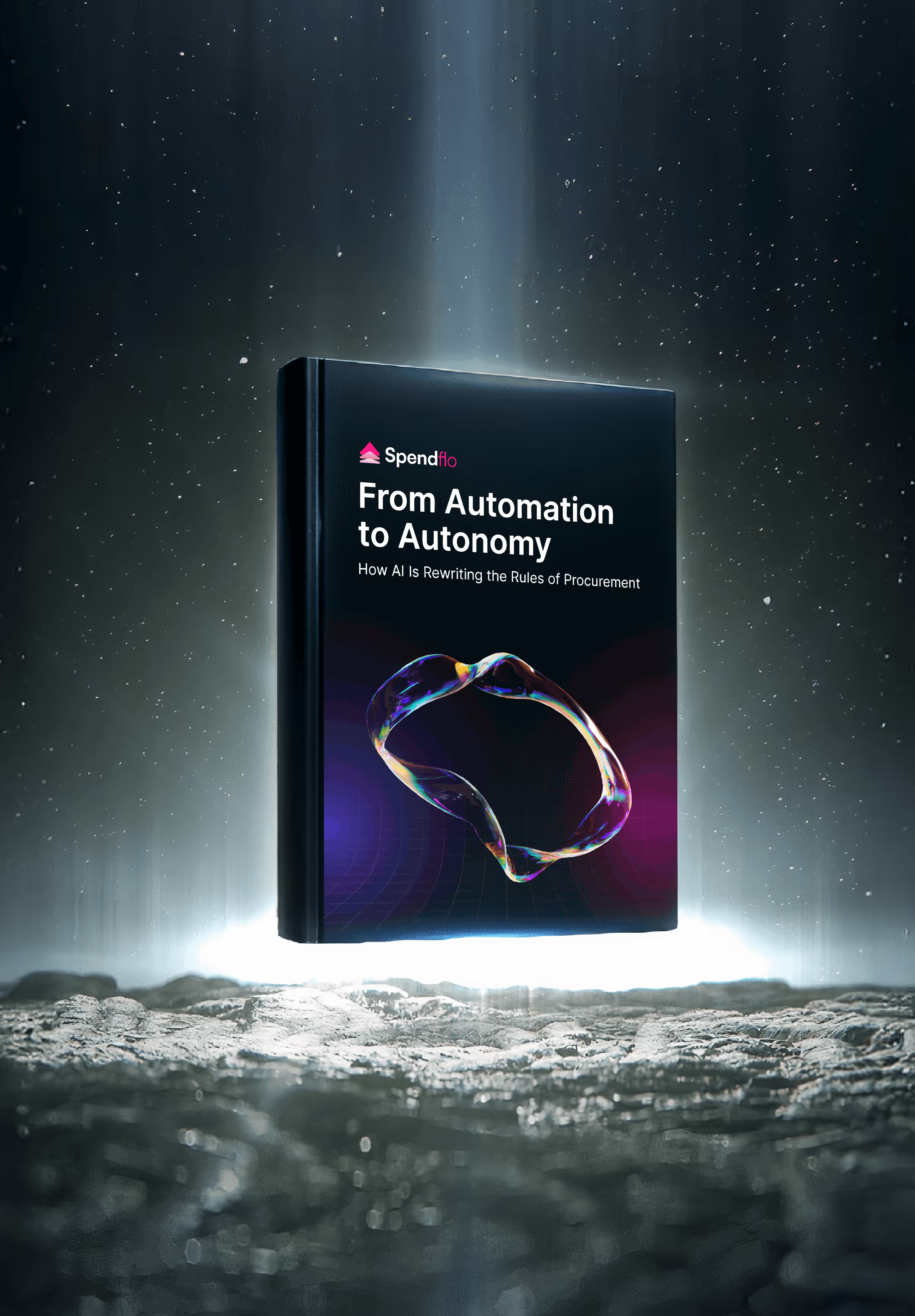

Top 5 Third Party Risk Management (TPRM) Software & Tools In 2025

Top 5 Third Party Risk Management (TPRM) Software & Tools In 2025
Learn about the key features and benefits of TPRM tools in enhancing security and compliance when working with third-party vendors.


By 2025, 60% of data breaches will originate from third-party vendors (RiskRecon). Imagine trusting an external vendor with critical business data - only to suffer a costly security breach due to their weak cybersecurity practices.
How prepared is your organization to mitigate third-party risks?
As businesses become more interconnected, managing vendor security, compliance, and financial stability is no longer optional. This is where Third-Party Risk Management (TPRM) tools step in, helping organizations proactively assess, monitor, and mitigate vendor-related threats before they escalate into a full-blown crisis.
Importance of TPRM in Today’s Business Environment
In today’s interconnected business world, organizations rely heavily on third-party vendors, suppliers, and service providers to support their operations. While these relationships offer numerous benefits like cost savings, increased efficiency, and access to specialized expertise, they also introduce significant risks.
A single weak link in your third-party ecosystem can lead to data breaches, compliance violations, reputational damage, and financial losses. In fact, Deloitte’s 2024 Global Survey revealed that 83% of organizations experienced a third-party incident in the past three years, with an average financial impact of $4.8 million per incident.
Also, regulators worldwide are increasingly holding organizations accountable for the actions of their third parties. Regulations like GDPR, HIPAA, and CCPA require companies to ensure their vendors adhere to strict data privacy and security standards. Failure to comply can result in hefty fines and legal consequences.
Given these high stakes, it’s clear that effectively managing third-party risks is no longer optional - it’s a business imperative. That’s where TPRM tools come in, providing organizations with the capabilities they need to identify, assess, monitor, and mitigate risks across their vendor ecosystem.
Quick Comparison Table: Best TPRM Tools for 2024
Below is a quick comparison of the top 5 TPRM tools, highlighting their key features and best use cases.
Top 5 TPRM Tools for Effective Vendor Risk Management
Choosing the right Third-Party Risk Management (TPRM) tool is essential for ensuring vendor security, compliance, and risk mitigation.
Here are the top five TPRM tools available today, with Spendflo leading the pack.
1. Spendflo
Best for: Enterprises & High-Growth Companies looking for an all-in-one TPRM and SaaS procurement solution.
Spendflo offers a comprehensive TPRM solution that streamlines vendor risk assessments, automates compliance workflows, and provides real-time monitoring of cybersecurity, financial, and regulatory risks.
Key Features:
- Automated Vendor Risk Assessments – Save time with AI-powered assessments and real-time risk scoring.
- Continuous Vendor Monitoring – Get instant alerts for cybersecurity breaches, financial instability, or compliance risks.
- Centralized Vendor Management – Store vendor data, contracts, and risk documents in one place.
- SaaS Cost Optimization – Reduce software costs while maintaining compliance.
- Regulatory Compliance Mapping – Aligns with GDPR, ISO 27001, SOC 2, and HIPAA.
- Custom Workflows & Integrations – Seamlessly integrates with procurement and IT security platforms.
Spendflo’s Compliance & Security Features
- Automated Compliance Mapping – Ensures adherence to GDPR, SOC 2, HIPAA, and ISO 27001.
- Real-Time Threat Detection – Uses AI to detect vendor breaches, security vulnerabilities, and financial risks.
- Audit-Ready Reporting – Generates audit reports and maintains risk logs for regulatory inspections.
2. OneTrust Vendorpedia
Best for: Enterprises prioritizing data privacy and compliance-heavy industries.
OneTrust Vendorpedia is a privacy-first TPRM solution designed for businesses managing strict regulatory environments. It offers deep compliance features and vendor risk analysis tools.
Key Features:
- Automated third-party risk assessments
- Regulatory compliance tracking (GDPR, CCPA, HIPAA)
- Vendor risk profiling with risk score insights
3. Prevalent
Best for: Midsize to large enterprises looking for scalable third-party risk management.
Prevalent provides an end-to-end TPRM platform that combines vendor assessments, continuous monitoring, and compliance workflows into one system.
Key Features:
- Automated vendor onboarding and assessments
- Third-party security ratings & risk tracking
- Workflow automation for remediation
4. ProcessUnity
Best for: Companies needing a flexible, customizable TPRM platform.
ProcessUnity is a modular TPRM tool that allows businesses to tailor their risk assessment process to their unique needs, from cybersecurity to financial risk tracking.
Key Features:
- Customizable risk assessments & scoring
- Vendor performance tracking
- Integration with GRC tools for compliance
5. SecurityScorecard
Best for: Organizations focused on real-time cybersecurity risk monitoring.
SecurityScorecard specializes in cyber risk ratings, giving businesses instant visibility into vendor security postures using external threat intelligence.
Key Features:
- AI-driven vendor security risk scoring
- Breach detection & cybersecurity monitoring
- Continuous risk tracking with real-time alerts
Types of Risks Managed by TPRM Tools
TPRM tools help organizations manage various risks associated with third-party relationships, such as cybersecurity, compliance, operational, financial, reputational, and geopolitical risks.
Cybersecurity Risks:
Third parties with weak security controls can expose your organization to data breaches, malware, and other cyber threats. TPRM tools assess vendors’ security posture and monitor for vulnerabilities.
Compliance Risks:
Vendors that handle sensitive data on your behalf must comply with relevant industry and government regulations. TPRM tools help ensure third parties adhere to required standards.
Operational Risks:
Third-party performance issues or disruptions can negatively impact your operations and bottom line. TPRM tools monitor vendor SLAs and KPIs to proactively identify and address issues.
Financial Risks:
Vendors in poor financial health may be unable to deliver on their commitments. TPRM tools provide visibility into third parties’ financial viability and credit risks.
Reputational Risks:
Unethical vendor practice or negative publicity can tarnish your brand by association. TPRM tools monitor vendors’ reputations and alert you to potential issues.
Geopolitical Risks:
Third parties operating in politically unstable regions or subject to economic sanctions pose unique risks. TPRM tools help identify and mitigate these location-based threats.
Key Features of Effective TPRM Tools
While specific capabilities vary between solutions, here are some key features to look for when evaluating TPRM tools:
Vendor Inventory:
A central repository to store and manage vendor profiles, contracts, and risk-related documentation. Look for tools that can automatically populate vendor information from external sources. Questions to consider:
- Can the tool automatically import vendor data from contracts, questionnaires, and public sources?
- Does the tool provide customizable vendor profile templates?
- Can you easily search, filter, and categorize vendors based on various criteria?
Risk Assessment:
Workflows to streamline the vendor risk assessment process, from distributing questionnaires to analyzing responses. More advanced tools can map assessment results to common control frameworks. Questions to consider:
- Does the tool offer pre-built assessment templates for different risk domains and industries?
- Can you create custom questionnaires and scoring rules?
- Does the tool support multiple assessment methodologies (e.g., inherent risk, residual risk)?
- Can the tool map assessment results to control frameworks like NIST, ISO, and COBIT?
Continuous Monitoring:
Automated, real-time monitoring of vendor risks using external data sources and security ratings services. This is critical for identifying emerging threats between periodic assessments. Questions to consider:
- Does the tool integrate with leading security ratings providers?
- Can you set up custom alerts and thresholds for vendor risk scores?
- Does the tool monitor vendor financials, regulatory compliance, and negative news?
- Can the tool detect and alert on vendor data breaches and cyber incidents?
Performance Management:
Capabilities to track and manage vendor SLAs, KPIs, and performance issues. Some tools offer built-in vendor collaboration portals. Questions to consider:
- Can you define and track vendor SLAs and KPIs within the tool?
- Does the tool provide dashboards and reports to monitor vendor performance trends?
- Can you log and manage vendor performance issues and corrective actions?
- Does the tool offer a vendor collaboration portal for secure communication and document sharing?
Integration Capabilities:
Pre-built integrations with key enterprise systems like GRC platforms, procurement tools, and IT service management solutions. This enables a more unified and efficient TPRM process.
Benefits of Using TPRM Tools
TPRM tools offer numerous benefits, including increased efficiency through automation, improved visibility into vendor risks and performance, and reduced risk exposure .
Here’s a detailed breakdown:
1. Increased Efficiency:
TPRM tools automate repetitive tasks such as vendor questionnaires, data collection, and risk assessments, significantly reducing manual effort. This allows risk managers to allocate their time to strategic initiatives and high-priority risks.
2. Improved Visibility:
With advanced dashboards and reporting features, TPRM tools provide real-time insights into vendor performance, risk scores, and compliance status. Organizations can easily identify risk trends, compare vendors, and make data-driven decisions.
3. Reduced Risk Exposure:
TPRM tools use AI and machine learning to continuously monitor vendor networks, financials, and cybersecurity posture. By detecting potential risks early, organizations can proactively mitigate them, reducing the likelihood and impact of third-party incidents.
4. Better Compliance:
TPRM tools come with pre-built templates and workflows aligned with major regulations such as GDPR, HIPAA, and SOC 2. Automated evidence collection and audit trails simplify compliance reporting, significantly reducing preparation time for audits.
5. Long-term relationships:
With centralized vendor communication, shared task management, and real-time status updates, TPRM tools foster transparency and accountability. Vendors can directly input responses and upload evidence, while internal stakeholders can easily provide input and approvals, streamlining the entire third-party risk management lifecycle.
With these clear advantages, it’s no surprise that Gartner reports 60% of organizations will invest in TPRM tools by 2025, up from just 35% in 2022.
Evaluating and Selecting TPRM Tools
With dozens of TPRM solutions on the market, how do you choose the right one for your organization? Here’s a step-by-step process to guide your evaluation and selection:
1. Define Requirements:
Start by clearly documenting your TPRM program objectives and specific functional needs. Engage stakeholders from procurement, IT, compliance, legal, and business units to ensure all perspectives are captured.
2. Identify Shortlist:
Research the TPRM market and identify 4-6 tools that best align with your requirements. Analyst reports from Gartner and Forrester are a good starting point, as are peer review sites like G2 and Capterra.
3. Conduct Detailed Evaluations:
Invite shortlisted vendors to provide detailed product demonstrations, customer references, and pricing proposals. Use a structured evaluation scorecard to objectively assess each solution against your requirements.
4. Check References:
Don’t skip this critical step! Talking to reference customers who have used the tool in a similar context to yours will give you invaluable insights into real-world performance and customer support.
6. Plan Implementation:
Develop a phased implementation plan covering data migration, system integration, process updates, and user training. Consider engaging the vendor’s professional services team to help accelerate time-to-value. By following this rigorous evaluation process, you can be confident you’re selecting a TPRM tool that will deliver the capabilities and ROI your organization requires.
Integrating TPRM Tools with Existing Systems
To maximize the value of your TPRM tool, it’s important to integrate it with other key systems and data sources across your organization. Common integration points include:
- GRC Platforms: Sync vendor risks and performance data with your centralized governance, risk, and compliance system for a holistic view of enterprise risks.
- Procurement Solutions: Integrate TPRM assessments and monitoring into your procurement workflows to embed vendor risk considerations into sourcing decisions.
- IT Service Management: Automatically route vendor performance issues and SLA violations from your TPRM tool to your IT service desk for prompt resolution.
- Security Rating Services: Ingest vendor security scores from external providers like BitSight or SecurityScorecard to enhance your continuous monitoring capabilities.
- HR Systems: Cross-reference your vendor contacts against employee records to identify potential conflicts of interest or insider threats
Best Practices for Implementing TPRM Tools
Deploying a TPRM tool is a significant undertaking that requires careful planning and execution. Here are some best practices to ensure a successful implementation:
Secure Executive Sponsorship:
Engage C-level leaders to champion the project and ensure it aligns with broader organizational goals and priorities.
Establish Clear Governance:
Define roles, responsibilities, and processes for managing the TPRM tool, including data ownership, access controls, and change management.
Start with Quick Wins:
Begin your rollout with a focused use case that can deliver rapid value and build momentum for broader adoption. Common starting points include automating vendor assessments or enabling continuous monitoring.
Invest in Training:
Make sure end-users are properly trained on the new tool and understand how it integrates with their existing workflows. Ongoing education is key to driving consistent usage.
Monitor and Measure:
Establish KPIs to track the performance of your TPRM tool and its impact on overall program effectiveness. Regularly report on progress to sustain executive support.
Optimize your third-party risk management strategy with Spendflo
Spendflo is a comprehensive third-party risk management platform designed to help organizations effectively manage and mitigate risks associated with their vendor relationships.
- Our platform automates vendor risk assessments, saving you time and resources while ensuring consistency and accuracy.
- We provide real-time monitoring of your vendors' cybersecurity, financial, and regulatory risks, alerting you to potential issues before they impact your business.
- Spendflo serves as a single source of truth for all your vendor data, contracts, and risk information, making it easy to manage and monitor your third-party relationships.
- Our platform adapts to your organization's specific risk management processes, with customizable workflows and approval chains.
- Spendflo helps you demonstrate compliance with key regulations and standards, with built-in mapping to frameworks like GDPR, HIPAA, and ISO 27001.
Curious? Talk to us now
Frequently Asked Questions on TRPM tools
What is the ISO standard for TPRM?
ISO 27001 and ISO 27036 are the most relevant standards for third-party risk management. ISO 27001 provides a framework for information security management, while ISO 27036 specifically focuses on information security for supplier relationships.
Is TPRM part of GRC?
Yes, third-party risk management (TPRM) is a key component of governance, risk, and compliance (GRC). TPRM focuses on identifying, assessing, and mitigating risks associated with an organization’s third-party relationships, which is an essential aspect of overall risk management within the GRC framework.
Why is TPRM required?
TPRM is required to protect organizations from potential risks, such as data breaches, financial losses, and reputational damage, that can arise from third-party relationships. Regulators and industry standards increasingly emphasize the importance of managing third-party risks, making TPRM a critical compliance requirement for many organizations.
Who owns third-party risk?
The ownership of third-party risk can vary depending on the organization’s structure and risk management framework. Typically, a combination of departments, including procurement, legal, compliance, IT, and risk management, share the responsibility for managing third-party risks, with oversight from senior management and the board of directors.
What is the difference between TPRM and VRM?
While both TPRM and vendor risk management (VRM) focus on managing risks associated with external parties, TPRM has a broader scope. TPRM encompasses all types of third-party relationships, including suppliers, vendors, partners, and service providers, whereas VRM specifically focuses on risks related to vendors supplying goods or services to an organization.














.png)










.avif)





